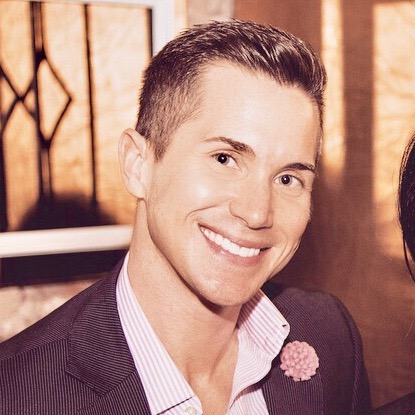Late-Deafened, But Not Silent: Redefining Visibility on My Terms
- Waymon Hudson

- Jul 8
- 4 min read
Someone once tried to get my attention by shouting my name from behind me. I didn’t turn around.
They got frustrated. “What, are you ignoring me?”
“No,” I said, smiling. “I’m deaf.”
Beat. Awkward silence. The kind that makes people uncomfortable — and kind of delights me now. Because here’s the thing:
I’m late-deafened. I lost my hearing in adulthood, rapidly and without warning, after what should’ve been a routine flu. A high fever triggered a latent genetic condition and in six months… everything went quiet.
But let’s back up — because it didn’t start poetic.

When the Music Stopped
Before I went deaf, my entire life revolved around sound.
I was a dancer. A theater kid. A musical theater obsessive who felt lyrics in his bones. Someone who grew up dreaming of writing a Broadway show. My voice — literal and metaphorical — was everything to me. And when the hearing started slipping away, I didn’t feel brave or resilient. I felt gutted.
I cried in the shower when I realized I couldn’t hear the water anymore.
I isolated. I panicked. I spiraled into a deep depression, convinced that the most vibrant part of me — the part that sang, moved, told stories through rhythm and language — had been ripped away. I honestly thought that chapter of my life was over.
How could I write a musical if I couldn’t hear it?
How could I live in a world built for sound when I was suddenly locked out of it?
My Brain Refused to Let Go
Here’s the miracle: my brain wouldn’t give up music. Even when the sound disappeared, the memory of it didn’t. The rhythm stayed. The emotional logic stayed. And slowly, I learned to feel music in a new way — through vibration, through internal rhythm, through remembered melody. My body became its own speaker system.
I could “hear” the score in my head — and feel it in my chest.
When I started writing Speakeasy, my original Broadway-style musical set in a 1920s queer jazz club, I wasn’t doing it in spite of being deaf — I was doing it because of it. I knew every chord, every harmonic lift, every syncopated burst of ensemble sound. The fact that I couldn’t hear it the traditional way didn’t matter anymore.
I could still create it. And I did.
Learning to Translate the World
The practical side of deafness? It’s exhausting.
I learned to lipread — fast. I use captions at work. I speak clearly, which means people often don’t realize I’m deaf unless they’re standing behind me yelling (Pro tip: if I’m not facing you, I literally can’t hear you. No, I’m not ignoring you. Yes, it’s okay to laugh). I move through hearing spaces every day, but I’m decoding nonstop — eyes scanning lips, piecing together syllables, translating in real time. By the end of the day, my brain is wrecked.
But I do it. Not because it’s easy — but because it matters. Because communication, creativity, connection — those are things I’ll never stop fighting for.
Late-Deafened: Between Two Worlds
Being late-deafened means I don’t fit cleanly into either world. I’m “too deaf” for hearing people. “Not Deaf enough” for some in the Deaf community. But here’s what saved me: finding my people.
Deaf culture is the closest-knit, most welcoming community I’ve ever experienced. If you see someone signing out in public, you walk up, start signing, and boom — you’ve made a new best friend. It’s beautiful. It’s belonging. It’s a whole world of expression and identity that I didn’t grow up with — but now, I can’t imagine living without.
I learned ASL quickly, not just to communicate, but to connect. And that connection, that new language of movement and meaning, reshaped how I tell stories.
It’s in Notes From a Sissy, my memoir. The silence, the fragmentation, the weight of being unseen — they’re all there. But so is the fight to reclaim my voice. To turn trauma into clarity. To refuse to stay quiet.
It’s in Speakeasy, too. The irony of a deaf man writing a musical isn’t lost on me — but it also isn’t ironic. It’s proof. It’s protest. It’s art doing what it’s always done: making something true out of what the world said was broken.
This Isn’t a Tragedy Story
Yes, losing my hearing was hard. Devastating, even. But I don’t want pity — I want people to understand.
Being deaf didn’t end my life. It changed it. And in many ways, it gave me a new kind of power. A new lens for empathy, activism, and creativity. A community I cherish. A silence that doesn’t mean absence — but awareness.
And a new kind of listening — one that doesn’t depend on ears.
Visibility on My Terms
The world doesn’t always know where to place someone like me. A deaf person who speaks clearly. A musical theater writer who doesn’t hear. A creative who straddles two identities with full hearts in both.
But here’s what I know:
My voice didn’t vanish. It evolved.
I still hear music — maybe not with my ears, but with everything else.
And I’m still telling stories — loud, unapologetic, defiant ones.
So if you’re late-deafened, or feeling unseen, or living in between — this is your reminder: you don’t have to fit anyone’s binary. You’re allowed to be messy, strong, beautiful, exhausted, brilliant, and whole.
Exactly as you are.








Comments